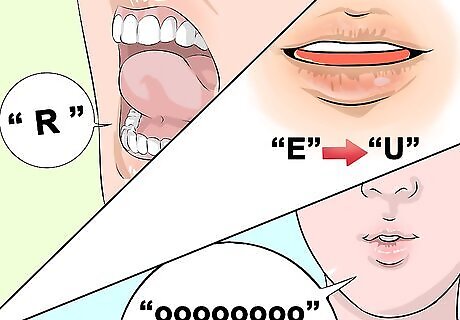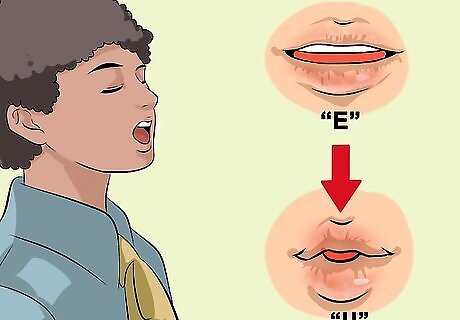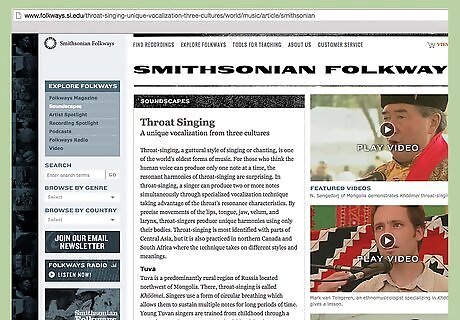
views
Throat Singing

Relax your jaw and lips. Your mouth should be slightly open with roughly a centimeter between your upper and lower teeth. One way to relax your jaw is to put on a recording of a droning sound, then to sing in unison with that sound for a full breath cycle. For instance, you could pull up a cello drone in D, then take a single syllable like "oo" or "la" and inhale and sing along with that drone for a full exhale.

Make an "R" or "L" sound with the tip of your tongue. Your tongue should almost touch the roof of your mouth. Don't worry if it brushes it occasionally, just get comfortable with the position.

Sing a comfortably low "base" note. Sing and hold a note, just one note, with your tongue in place. You will be playing with this note to create your overtones. Sing from your chest, getting as deep as you can. Think of saying "oo," (like the sound in the word "cool") with the deepest voice you can.

Move the body of your tongue back and forth. Keeping the tip of your tongue on the roof of your mouth. Think of it as shifting between an "R" and an "L" sound with your tongue.

Slowly change the shape of your lips to adjust the sound. Think of moving your mouth from an "E" sound to a "U" sound ("as if saying "see you" without the "s"). This changes the shape of your lips and the "resonance" of your mouth (how sound bounces around inside). Do this slowly.

Bring it all together to throat sing. Everyone's mouth is a little different and there is no perfect formula for tongue position, mouth opening, or volume. Start with your basic "oooo" note, and then: Place your tongue near the roof of your mouth in a "r" position. Move your lips slowly between the "E" and "U" vowel sounds. Slowly curl your tongue back and away from the your lips. When you hear your overtones, stop moving your mouth and hold the tone.
Improving your Sound

Practice with some background noise. These will hide your normal vocal tones and make your high-pitched "whistling" tones louder. Try practicing in the shower, while you drive, or while the TV is on in the back Don't worry if you cannot hear the overtones at first. It is difficult to hear yourself singing overtones when you first begin, even if you are making them properly, because of the the resonance in your head.

Sing with a loud, bright voice. When they are first starting out, most people don't give enough power and energy behind their voice, To get the "ooooo" sound right, imagine you are trying to sing as someone squeezes your throat. Your voice will need to loud and forceful, and this will help you create overtones. After you master throat singing technique you can lower your volume and vocal power to something more comfortable. The best way to sing more beautifully and richly is to discover your true voice in the actual world, ex. to become more comfortable with your speaking voice.

Focus on singing from your upper chest. There is a difference between your "chest voice" and you "head voice." With you head voice, you usually sing at a higher pitch, and you can feel the sound coming from your throat. A chest voice feels "resonant," and you can feel the vibrations along your upper chest.

Practice changing notes. Once you can comfortably make sing with overtones, you can learn to make melodies by moving your lips and adjusting your base note. Open and close them like you were transitioning from an "E" sound to a "U" sound ("eeeeee &rarr: you).

Listen to real life examples. Throat singing is found in cultures from Alaska to Mongolia and South Africa. The Smithsonian museum has an incredible collection of videos from these cultures, as well as some tutorials for burgeoning throat singers.

















Comments
0 comment